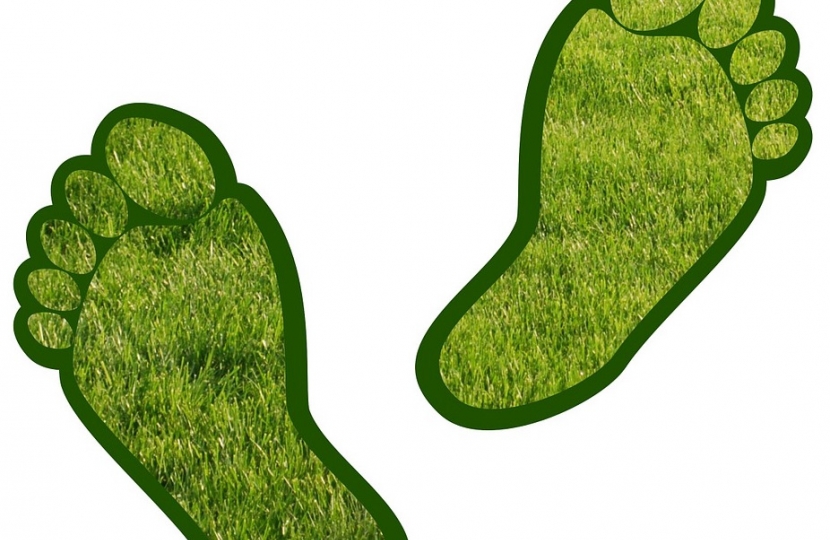
Conservative led Wiltshire Council is projected to have cut its carbon footprint by 80% on 2014/15 emissions at the end of this financial year.
This also represents a carbon reduction of 68% on its 2018/19 emissions, which is when the council declared a climate emergency and resolved to seek to make the county of Wiltshire carbon neutral by 2030.
The projection is based on a range of changes that services across the council have made in the way they operate. The council will be able to fully assess its progress - and whether it has reached or indeed exceeded the projected 80% reduction - in the summer.
On 2 February, Cabinet will review and be asked to approve a report on the council's climate change progress, which will detail many of the improvements it has made in its carbon neutral journey.
Conservative Cllr Richard Clewer, Cabinet Member for Climate
We're pleased to have made such good progress in reducing our carbon footprint over the past few years, but there is much more to do as we seek to make Wiltshire carbon neutral by 2030.
We have a dedicated climate team in place to drive this forward, and they will be developing a Carbon Management Plan to plot the council's pathway to zero carbon, including offsetting any residual emissions. They are also developing a Climate Strategy, which we will look to consult on later this year.
There have been many challenges for the council during this past year, and while there are many more to come, addressing our climate ambitions is a priority for us.
Measures that the council has taken to reduce its carbon emissions, include:
- The switch to a green energy tariff, which ensures all energy the council uses comes from renewable sources and can now be classed as carbon neutral. This has resulted in significant immediate progress towards reducing council emissions.
- Wiltshire's Conservation and Museums Advisory Service (CMAS), based at the Wiltshire and Swindon History Centre, has developed a Sustainability Action Plan for its laboratory-based conservation services. The plan focuses on chemical usage, waste management, smart use of resources and energy usage, and aims to operate a sustainable laboratory and set a standard that others can follow.
- Preparing a Green and Blue Infrastructure Strategy, which will inform and support the implementation of policies within the Local Plan, particularly in terms of improvements to the natural environment and biodiversity within Wiltshire. The strategy will help to deliver strong and well-connected natural environments across Wiltshire that are valued by communities and support sustainable development.
- To improve biodiversity in Wiltshire, the council has been carrying out wildflower trials on both highway verges and amenity land, and these will be extended if successful. In the trial areas, cuts have been reduced from nine annually to two, avoiding the main flowering period from mid-May through to the end of August. Over time this will help to develop a short, flower-rich turf that is valuable for bees and other insects. Clippings are collected after each cut to reduce the build-up of organic material, to keep nutrient levels low, and ensure plenty of room for plants to regenerate from seed.
- To support bus services in Wiltshire, the council received a grant of £671,000 to improve existing bus services or bring back services that had ended. An initial consultation was held for council members and the town and parish councils, but any outcomes have been delayed by COVID, and as such the consultation exercise will be repeated in the summer.
- The council's £12m programme to convert streetlights across Wiltshire to LEDs continues, with approximately 20,000 units replaced so far out of a total of 42,000. Since 2013/14, energy consumption has been reduced by 39% thanks to part-night lighting, dimming and the use of LEDs for new and replacement units, and carbon emissions have more than halved despite a growth in the number of streetlights as new developments are built.
The council is also bidding for government funding for several schemes that will help with reducing carbon emissions, including:
- A £550,000 application to the Government's Green Homes Grant Local Authority Delivery Scheme, which will enable improvements to 100 council homes with the poorest levels of insulation by September 2021.
- A bid of £4.5m to the Public Sector Decarbonisation Scheme (PSDS). The council has initially been awarded £200,000 for improvements at Warminster library, but if successful, the main bid will see the council replacing existing gas heating with air source heat pumps at four large leisure centres (£2.6m); upgrading air handling units at three leisure centres (£400,000); upgrading the motors and fans at seven large buildings (£100,000); installing solar panels at 19 buildings (£1.1m); and preparatory works (£200,000). If the bid is successful, improvements will be completed by September 2021.
- A £1.2m bid for Demand Responsive Transport (DRT) to modernise and enhance the existing DRT scheme in the Pewsey Vale.
Ahead of the publication of the Climate Strategy, the council has produced a Climate Strategy Discussion document, which provides an overview of the challenges and opportunities ahead for both the council and the county of Wiltshire.


